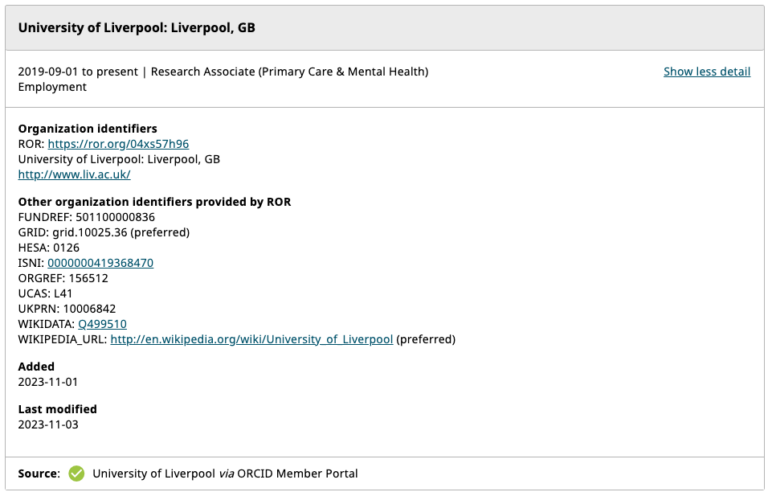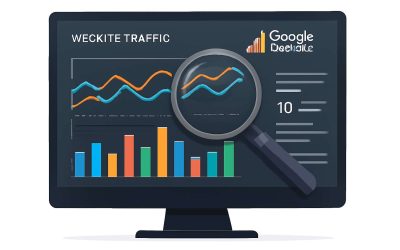Understanding Website Traffic
What is Website Traffic?
Imagine your website as a bustling marketplace—each visitor a curious soul drawn in by your unique offerings. Understanding how to view website traffic transforms this lively scene into a strategic masterpiece. It’s more than just numbers; it’s the heartbeat of your online presence, revealing what captivates your audience and where your efforts resonate most.
When you learn to view website traffic, you unlock insights about visitor behavior, popular pages, and the pathways that lead users to your site. This knowledge empowers you to refine your SEO strategies, ensuring your content attracts the right crowd. Analyzing traffic data can also uncover hidden opportunities to enhance user experience and increase engagement, turning casual visitors into loyal patrons.
By exploring tools and metrics available for viewing website traffic, you can delve into details such as source channels, device preferences, and geographic locations. These elements help tailor your SEO approach to the South African market, ensuring your website remains relevant and compelling in a competitive landscape.
Types of Website Traffic
In the shadows of the digital realm, understanding the different **types of website traffic** becomes a vital key to unlocking the true essence of your online presence. Every visitor that crosses your virtual threshold leaves behind a whisper—an echo of intent, curiosity, or perhaps desperation. To **view website traffic** is to peer into this ghostly procession, discerning patterns that might otherwise remain hidden in the gloom.
Broadly, website traffic can be categorized into three spectral forms: organic, direct, and referral. Organic traffic flows like an unseen river, driven by search engines and the delicate art of SEO. Direct traffic appears as a silent visitor, typing your URL with unwavering focus, while referral traffic comes from external sites—whispering about your existence to a new audience. Recognizing these types helps construct a more nuanced strategy, especially when tailoring your SEO efforts to the South African market.
Importance of Monitoring Website Traffic
Understanding the ebb and flow of your digital footprint is akin to deciphering the subtle language of unseen forces that shape your online destiny. To view website traffic is to unlock a clandestine narrative—one that reveals not just numbers, but the very pulse of visitor intent, engagement, and potential. Every spike, lull, or anomaly whispers a story, urging you to delve deeper into the patterns that underpin your digital landscape.
Monitoring this flow transcends mere curiosity; it becomes a strategic necessity. In South Africa’s competitive online arena, where consumer behavior is as diverse as the terrain, knowing how to view website traffic provides clarity. It helps identify which channels—be it organic search, direct visits, or referral links—fuel your growth. Recognizing these channels enables a more refined approach, tailoring your SEO efforts to resonate with the unique local market.
Key Metrics to Track for Website Traffic Analysis
Visits and Unique Visitors
You might think that simply knowing how many visitors land on your site is enough, but the true story unfolds when you delve deeper into the key metrics that reveal the health of your digital presence. Among these, visits and unique visitors stand out as foundational indicators in view website traffic analysis. Visits measure the total number of times your site is accessed, which can include repeat visits from the same user. In contrast, unique visitors count each individual only once within a specified period, offering a clearer picture of your reach.
Understanding the interplay between these metrics can illuminate audience engagement and reveal patterns that might otherwise go unnoticed. For instance, a high number of visits coupled with a steady growth in unique visitors suggests both loyalty and expanding interest. Conversely, a spike in visits without a corresponding increase in unique visitors may point to the need for fresh content or improved user acquisition strategies. When it comes to view website traffic, these metrics serve as vital signposts guiding your digital journey.
Page Views and Pages per Session
When analyzing view website traffic, understanding how visitors interact with your site is crucial. Two key metrics often overlooked are page views and pages per session. Page views tell you how many times a page is loaded, offering insight into content popularity. Meanwhile, pages per session reveal how engaged users are, showing how many pages they typically explore during a single visit.
High page views accompanied by a solid average of pages per session suggest visitors find your website compelling and worth exploring further. Conversely, low engagement metrics might indicate that your content isn’t resonating or that visitors aren’t finding what they need quickly. To get a holistic picture, consider tracking these metrics alongside other indicators such as bounce rate and average session duration. When you view website traffic through this lens, patterns become clearer, and your digital strategy can be fine-tuned for better results.
Bounce Rate
Understanding bounce rate is essential when you view website traffic, because it reveals how visitors engage with your content. A high bounce rate often signals that visitors aren’t finding what they need quickly or that your landing pages aren’t compelling enough to keep them exploring. Conversely, a low bounce rate indicates that your site effectively captures attention and encourages further interaction.
This metric is especially telling when paired with other indicators such as average session duration. If you notice a high bounce rate but long session times, it might mean visitors are reading a single page thoroughly. But if both bounce rate and session duration are low, it suggests your content isn’t resonating. To fully grasp visitor behavior, consider tracking bounce rate alongside page views, pages per session, and conversion rates. When you view website traffic through this lens, patterns emerge that can refine your digital strategy—ensuring each visitor’s journey is purposeful and engaging.
Average Session Duration
Within the vast digital landscape, one metric gleams like a guiding star—Average Session Duration. It reveals not just how long visitors linger but paints a vivid picture of their engagement and curiosity. When you view website traffic through this lens, you’ll uncover stories of interest, hesitation, or disconnection that raw numbers alone cannot tell.

This metric acts as a window into the depth of visitor interaction. A lengthy session suggests your content has woven a spell, captivating the visitor’s attention, while brief visits might signal the need for more compelling storytelling or clearer calls to action. To truly understand the impact of your content, consider pairing average session duration with other data points such as conversion rates and page views. Together, these insights help craft a narrative of your website’s allure and effectiveness—transforming mere visitors into loyal explorers of your digital realm.
Traffic Sources
In the intricate dance of digital intrigue, understanding which avenues summon your visitors is paramount. Tracking **view website traffic** from diverse **traffic sources** unfolds as a symphony of discovery, revealing the pathways that lead curious minds to your digital doorstep. Are they arriving via organic search, beckoned by the whisper of SEO? Or do social media channels serve as the vibrant gateways that draw in a lively crowd?
By dissecting these origins, you gain a clearer picture of your audience’s habits and preferences. To navigate this labyrinth effectively, consider analyzing a blend of sources: search engines, referral links, direct visits, and paid campaigns. Each channel whispers its own story—a narrative waiting to be uncovered, guiding your strategy with the precision of a compass. When you view website traffic through this prism, every visitor becomes a chapter in your ongoing saga of digital allure and engagement.
Conversion Rate
In the grand theatre of digital engagement, understanding the key metrics for view website traffic transforms mere numbers into a symphony of insights. Among these, the conversion rate stands as the crowning jewel—a delicate measure of how many visitors perform the desired action, be it a purchase, sign-up, or inquiry. It’s the heartbeat of success, whispering tales of alignment between your content and audience intent.
Tracking this crucial metric reveals the effectiveness of your marketing strategies and highlights the silent pathways that lead visitors from curiosity to commitment. By analyzing the conversion rate alongside other vital indicators, you peel back layers of mystery surrounding your digital footprint. Every percentage point gained or lost whispers secrets about your audience’s true desires—secrets waiting to be uncovered. Viewing website traffic through this lens ensures each visitor’s journey is not just observed but understood in the grand narrative of your online presence.
Tools to View and Analyze Website Traffic
Google Analytics
In the relentless pursuit to understand the digital heartbeat of your online presence, tools to view website traffic become an essential compass. They unveil the silent stories behind each click, each visit—stories of human curiosity, fleeting moments of engagement, and the subtle dance of intention and decision. Google Analytics, for instance, transforms raw numbers into a narrative—a tapestry woven with insights about visitor behavior, source origins, and engagement patterns that might otherwise go unnoticed.
When you delve into these analytics, you gain more than data—you gain perspective. The ability to view website traffic in real-time, monitor trends over time, and uncover hidden patterns becomes an act of clarity amidst the chaos. These tools often feature intuitive dashboards, allowing you to dissect traffic sources—from organic search to social media—and see precisely how visitors find you. It’s not just about numbers; it’s about understanding the human stories that drive each session and using that understanding to forge authentic connections.
Google Search Console
In today’s digital jungle, simply having a website isn’t enough. If you want to truly understand your audience, you need to learn how to view website traffic with finesse. Luckily, tools like Google Search Console are here to decode those mysterious numbers and reveal what’s really happening behind the scenes. Think of it as your digital spyglass—without the shady side—showing you where visitors come from, what they click on, and how long they stay. It’s like getting a backstage pass to your website’s performance, minus the velvet rope.
Google Search Console offers a treasure trove of insights—search queries, click-through rates, indexing status, and more. It’s especially handy for uncovering which keywords are actually driving traffic and which aren’t, saving you from throwing digital spaghetti at the wall and hoping something sticks. To make sense of it all, many marketers rely on its intuitive dashboards, which present data clearly and accessibly. Whether you’re tracking organic traffic or diagnosing issues with your site’s visibility, this tool makes viewing website traffic a strategic advantage, not a guessing game.
Here’s a quick rundown of what you can see when you view website traffic through Google Search Console:
- Search performance metrics—clicks, impressions, and average position
- Keyword performance—what phrases are driving visitors to your site
- Index coverage—spotting crawl issues before they snowball
In essence, it’s about turning raw data into a compelling story—one that guides you to optimize your content, enhance user experience, and ultimately, boost your SEO game. Because, let’s face it, in the world of website traffic, knowledge isn’t just power—it’s the secret sauce for digital success.
Other Analytics Tools
In the labyrinth of digital existence, understanding how to view website traffic is akin to deciphering the heartbeat of your online presence. Beyond the familiar terrains of Google Analytics and Search Console, a constellation of tools emerges—each whispering secrets about your visitors’ journeys. These tools act as your digital compass, guiding you through the shadows and illuminating pathways to growth.
For those seeking a more nuanced view of website traffic, alternatives like Matomo or Clicky offer rich, real-time analytics that bring fresh perspectives to your dashboard. They allow you to peer into user behavior with clarity and detail, transforming raw data into a symphony of insights. To navigate this ocean of information, some marketers prefer structured approaches—like ordered lists—to categorize traffic sources or user engagement metrics, making the complex dance of data more digestible.
- Heatmaps that reveal where visitors click most often, revealing what truly captures their attention.
- Real-time traffic monitors, providing an immediate pulse of current visitors and activities.
- Behavior flow reports, illustrating the pathways that visitors traverse through your website’s corridors.
Each tool serves as a window into the unseen, enabling you to craft a narrative from the chaos of numbers. When you learn how to view website traffic with finesse, your digital strategy transforms from a shot in the dark to a carefully orchestrated performance—resonating deeply with your audience’s desires and expectations.
Strategies to Improve Website Traffic
SEO Optimization
Understanding how to view website traffic is crucial for any business aiming to grow online presence. When you have clear insights into your traffic patterns, you can identify what truly drives visitors to your site. This knowledge allows you to tailor your SEO optimization strategies effectively.
One powerful approach is to analyze your traffic sources—whether from search engines, social media, or referral links—and focus on amplifying those channels. Additionally, refining your content based on visitor behavior helps improve engagement and reduces bounce rates.
To maximize results, consider implementing advanced SEO techniques like keyword optimization, backlink building, and ensuring your website is mobile-friendly. These tactics, combined with regular monitoring of your website traffic, help you stay ahead of the competition and attract high-quality visitors. Viewing website traffic isn’t just data—it’s the backbone of a successful digital strategy!
Content Marketing
Understanding how to view website traffic is more than just a numerical exercise; it’s a window into human behavior and the subtle forces that drive digital engagement. When you delve into your traffic data, you uncover stories—of curiosity, desire, and intent—that shape your online presence.
To deepen this understanding, employ strategic content marketing techniques that resonate with your audience’s subconscious motivations. Focus on creating compelling narratives that encourage visitors to linger and explore further. For example, crafting content that aligns with your visitors’ passions naturally increases engagement and encourages sharing.
A crucial aspect is to refine your approach based on the insights gained from viewing website traffic. Consider implementing targeted campaigns that amplify high-performing channels or content. Sometimes, a simple shift in focus—like prioritizing social media or referral links—can lead to a significant uptick in traffic.
Remember, the act of viewing website traffic isn’t merely data collection; it’s an exploration into the human psyche—an essential element for any compelling content marketing strategy.
Social Media Marketing
Harnessing the power of social media marketing can transform your digital footprint, especially when you understand how to view website traffic effectively. Engaging content tailored to your audience’s passions creates a magnetic pull, encouraging visitors to stay longer and explore more. In South Africa’s vibrant online landscape, tapping into social platforms like Facebook, Instagram, and Twitter allows you to reach diverse communities and foster meaningful connections.
By analyzing how visitors arrive through these channels, you can identify which social media campaigns resonate most. Consider prioritizing platforms that yield the highest engagement—this strategic focus can significantly boost your visibility. To refine your approach, experiment with different content formats, such as videos or stories, and monitor how these influence your ability to view website traffic.
- Consistently share authentic stories that reflect your brand’s values.
- Utilize targeted advertisements to reach niche audiences.
- Leverage user-generated content to build trust and authenticity.
Ultimately, viewing website traffic isn’t just about numbers; it’s about understanding the human stories behind each click. When you align your social media marketing efforts with these insights, you cultivate a community that’s genuinely engaged and eager to connect with your brand’s journey.
Paid Advertising
In the realm of digital enchantment, paid advertising emerges as a potent spell to summon more visitors and unlock the secrets behind view website traffic. When executed with precision, targeted ads can direct the right audiences straight to your virtual doorstep, transforming passive viewers into loyal explorers of your brand’s story. Harnessing the power of platforms like Google Ads and social media advertising, you can craft immersive campaigns that captivate and convert.
To amplify your reach, consider implementing a strategic approach. An effective method involves crafting a series of compelling ad variations, each resonating with specific audience segments.
- Refine your ad copy for clarity and resonance
- Utilize eye-catching visuals that evoke curiosity
- Set precise geographic and demographic parameters
Monitoring how these ads influence your ability to view website traffic enables you to pivot swiftly and optimize your campaigns for maximum impact.
Backlink Building Strategies
Unlocking the true potential of your website often hinges on one elusive metric: view website traffic. While many focus on surface-level numbers, the real magic lies in strategic backlink building. High-quality backlinks act as digital endorsements, compelling search engines to elevate your site’s visibility in the competitive landscape of South Africa’s online sphere.
One effective approach involves cultivating relationships with authoritative sites within your niche. This can be achieved through guest posting, creating shareable content, or engaging with industry influencers. As your backlink profile strengthens, so does your ability to view website traffic with greater clarity and precision. Remember, every link is a pathway—guiding curious visitors directly to your digital doorstep, where engagement awaits.
- Identify reputable websites relevant to your industry.
- Create compelling content that naturally encourages backlinks.
- Reach out to partners and influencers for collaboration.
- Monitor the impact of these backlinks on your view website traffic over time.
Legal and Ethical Considerations
Privacy Policies and User Tracking
In the labyrinthine realm of digital footprints, understanding how to view website traffic is merely the first step—the true mastery lies in navigating the legal and ethical currents that govern our actions. As the digital landscape becomes increasingly illuminated, the importance of robust privacy policies cannot be overstated. They serve as the moral compass guiding businesses through the murky waters of user data collection and analysis.
When employing user tracking tools to view website traffic, transparency is paramount. Clear, accessible privacy policies inform visitors of what data is being collected, how it is used, and their rights to control their information. This openness fosters trust—a currency more valuable than gold in today’s data-driven economy. Ignoring these considerations risks not only legal repercussions but also the erosion of consumer confidence.
To ensure compliance, consider implementing measures such as:
- Explicit consent prompts for user tracking
- Secure data storage practices
- Regular audits of data collection processes
By respecting user privacy and adhering to ethical standards, businesses can confidently view website traffic without casting shadows over their reputation. Ultimately, the harmony between data insight and integrity forms the bedrock of sustainable growth in the digital age.
GDPR and Data Collection Compliance
Navigating the labyrinth of digital compliance is not merely a matter of ticking boxes; it’s an art form that safeguards reputation and fosters trust. When you aim to view website traffic, understanding the legal and ethical landscape—particularly under GDPR—is paramount. South African businesses, like their global counterparts, must tread carefully, ensuring that data collection practices align with stringent privacy standards.
Failure to adhere to GDPR and local data protection laws can result in hefty penalties and a tarnished reputation. Transparency becomes the cornerstone of ethical data collection—prompting users for explicit consent before tracking their behavior. Remember, privacy policies should be clear and accessible, outlining how visitor data is managed and their rights to opt out.
Implementing measures such as secure data storage and regular audits is vital to maintain compliance. After all, viewing website traffic responsibly isn’t just about analytics; it’s about respecting the digital footprints of those who visit your site—an essential practice for sustainable growth in this data-driven age.



0 Comments